"Most Mexican silver hallmarks known today are found on pieces made ca 1860s onwards. Although the authorities tried to regulate silver and purity content at various times, the standards and notation of silver marks changed frequently and, more importantly, were not strictly adhered to by the various silversmiths in Mexico. Consequently, we have two to three periods of ten or so years, when certain silver marks were used to signify Registration or "Tax Paid", such as the Mexican Eagle found on many ca 1940s – 1970s silver jewelry, to initials plus numbers after 1980.
Most Mexican silver antiques made during 1860s – 1930s bear only the words “Sterling” or “Silver”. The vast majority of Mexican silver antiques and jewelry were made with at least 925 silver content."
http://www.marks4antiques.com/Identify-Silver-Antiques.htm
That being said, I don't think it's Mexican silver (unless done by an unknown silversmith). I've checked every hallmark in my "Little Book of Mexican Silver" and came up short. It vaguely resembles Chato Castillo; however, his is similar to the La Pierre hallmark and neither of those match. The only attachment to it being of Hispanic origin is "cena", which is Portugese for 'scene'...or Spanish for 'dinner'.
There is an American Indian (Zuni) artist, Cena Woobthee but both the jewelry and hallmark don't begin to compare.
bigcypresshunter said:
Yes it does. It also reminds me of a Chinese character.

Most likely it's of Chinese or Japanese export. They stamped kanji symbols on their exports for Westerners.
"These early (1890s-1930s) Hong Kong silver makers marks were usually the initials of the Silversmith in Kanji (simple Chinese) and sometimes followed by a few Latin letters or numbers. Japan followed similar beliefs and most Japanese silver production is recent, ca 1960s to Present."





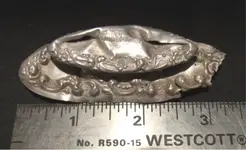
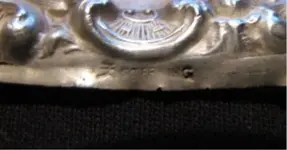
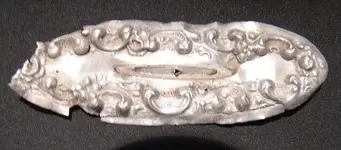
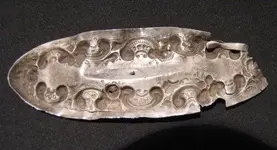
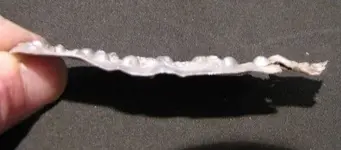
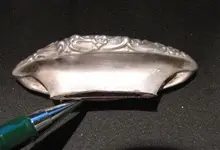
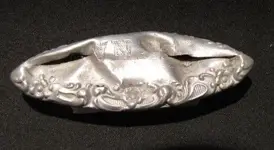
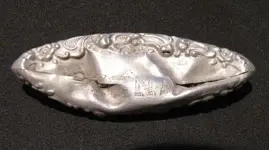
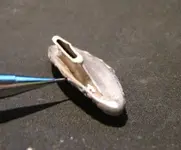


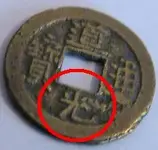

 So that's part is solved but the hallmark is still a mystery. Is there a half checkmark for half solved?
So that's part is solved but the hallmark is still a mystery. Is there a half checkmark for half solved? 
